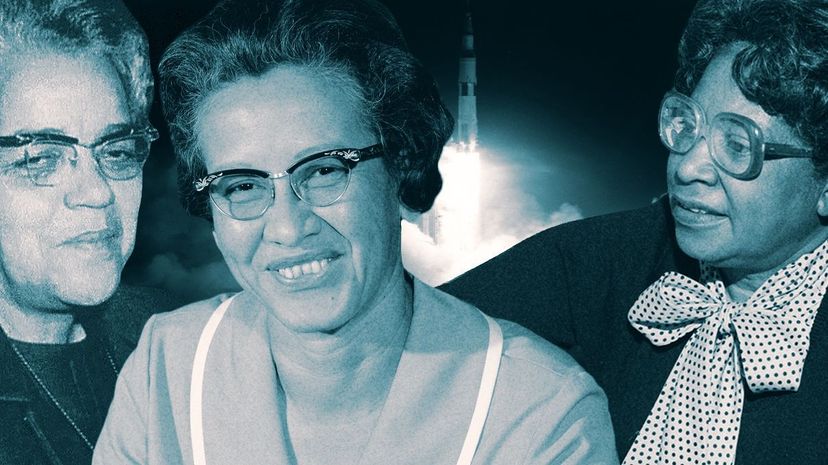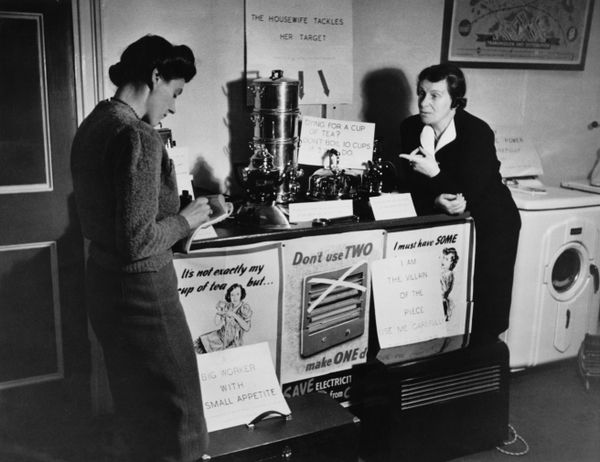
During a winter movie season dominated by sci-fi and tales of fantasy, the true story behind "Hidden Figures" propelled three largely unknown women into public awareness, albeit 60 or so years after their heyday.
The movie, released on Jan. 6, 2017, is based on the history of three black women who contributed to the United States' success in the Space Race of 1957–1975. All brilliant mathematicians and scientists, Katherine Johnson, Dorothy Vaughan and Mary Jackson defied the societal constraints imposed upon black women of the day.
Advertisement
It all began in 1943, the peak of World War II, when Vaughan came on board at the Langley Memorial Aeronautical Laboratory. The lab was part of the National Advisory Committee for Aeronautics (NACA), which would later become NASA. The war effort was heading skyward, which incited a massive hiring push to meet demand for "human computers" to process aeronautical data. Hiring Vaughan and other people of color was possible thanks to an executive order President Roosevelt issued in 1941 that prohibited discrimination in government and defense jobs, and created the Fair Employment Practices Commission. Executive Order 9346, issued in 1943, expanded the commission's power to enforce nondiscriminatory hiring policy. These orders are largely seen as the first governmental acknowledgement of racial employment disparity since Reconstruction, the turbulent period after the Civil War.
The Jim Crow years were still in full swing, though — so the African-Americans, known collectively as the West Area Computing Unit, and white people working for on the program were segregated. Jackson joined the computing team in 1951, and Johnson followed suit in 1953. As the Space Race began to escalate after the war, so did the emphasis on aerospace data. The three women enjoyed no shortage of accomplishments, before and throughout their years at NASA. Here are five notable achievements.
1. They successfully sent astronauts into space.
Katherine Johnson was a certified math genius, having graduated high school at age 14 and college at age 18. She calculated the trajectory for the spaceflight of Alan Shephard, who made history in 1961 as the first American in space. Later, when actual computers were employed to plot John Glenn's Friendship 7 mission, the astronaut specifically asked for Johnson to run the numbers by hand, so strong was his trust of her mathematical prowess.
2. Katherine Johnson helped integrate West Virginia University.
In 1939, Johnson was one of three students chosen to integrate West Virginia University. A trailblazer before she joined NACA, Johnson enrolled in the traditionally white graduate program years — and in some cases decades — before many other universities followed suit.
3. Dorothy Vaughan was NASA's first black manager.
Vaughan, the first of the trio to join NACA, so excelled as a computer that she was promoted in 1949 to manage the women of West End Computing. It was rare for a woman to achieve such a position, but for a black woman, it was practically unheard of. She ran the group for almost a decade, until segregated facilities were done away with. During her management tenure, she advocated for promotions and pay increases for her staff, as well as for white women working as computers in other groups.
4. Mary Jackson was the first black female engineer at NASA.
Jackson spent two years in the computing position, but opted to work for NASA engineer Kazimierz Czarnecki when the opportunity arose. At his urging, she gained permission to join whites-only classes and enrolled in a training program that earned her a promotion from mathematician to engineer. In 1958, she became NASA's first black female engineer.
5. Vaughan sent satellites into space.
After the NASA offices were desegregated and she lost her management title, Vaughan didn't slow down. She proved her scientific talent yet again by becoming a proficient programmer of FORTRAN, a computer programming language that revolutionized the speed and effectiveness of the process. Using those skills, she helped send satellites into orbit as part of the pivotal SCOUT (solid controlled orbital utility test) Launch Vehicle Program.
Advertisement


